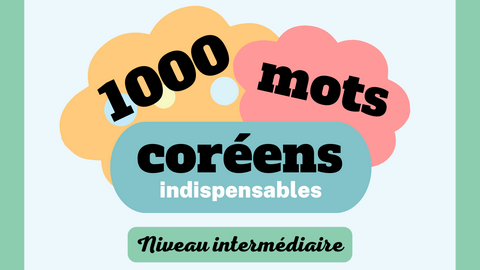Cours de coréen ᚛ Level 2 - Korean for Beginners #1 (Lessons 31 to 60) ᚛ Leçon 59 - The imperative in Korean
The imperative in Korean
The imperative in the casual style in Korean
In the casual style, the imperative isn't difficult at all. One just uses the conjugation of the Korean present tense that we saw at the beginning of our learning.
모두 앉아.
→ All of you, sit down.
빨리 대답해.
→ Answer quickly.
The imperative in the polite style in Korean
In the polite style, in its basic form, the imperative is again constructed based on the conjugation of the present tense and its forms with -아/어요.
However, this form is practically never used just like that. Basically, when we use the imperative, our listener is the person we're addressing and the person we're speaking to at the same time. Because of this, the imperative is often accompanied by the honorific style in the polite style.
In addition, since the imperative style generally implies an order, the use of the honorific style is advised in order to soften the suggestion and to show respect to the listener.
저를 믿으세요.
→ Believe me.
실내에서 작은 소리로 대화하세요.
→ Talk quietly indoors. (lit: Inside, we make conversations with small sounds.)
어서 오세요.
→ Welcome. (lit: Come quickly.)
The imperative in the formal style in Korean
En savoir +
Summary table of structure
En savoir +
Exercises
En savoir +
Ce livre numérique imprimable contient l’apprentissage de 1000 mots de vocabulaire de niveau intermédiaire répartis en 42 catégories. Il s’agit de la suite directe du premier tome de la série : Coréen - Mes 1000 premiers mots.
Chaque mot de cet ouvrage est accompagné de sa prononciation audio réalisée par un Coréen natif ainsi que d’une phrase d’exemple traduite qui l’utilise en contexte, afin de vous aider à en comprendre la nuance.
Enfin, un outil en ligne d’apprentissage du vocabulaire basé sur la méthode scientifique de Leitner par répétition espacée, la plus puissante à ce jour pour mémoriser le vocabulaire, est inclus. Cet outil vous permet, chaque jour, de vous entraîner au vocabulaire en vous faisant réviser les mots du livre. Il calcule ensuite automatiquement à quel moment vous devez le réviser de nouveau afin qu’il s’ancre petit-à-petit dans votre mémoire long terme et que vous ne l’oubliiez plus jamais.
En savoir +

